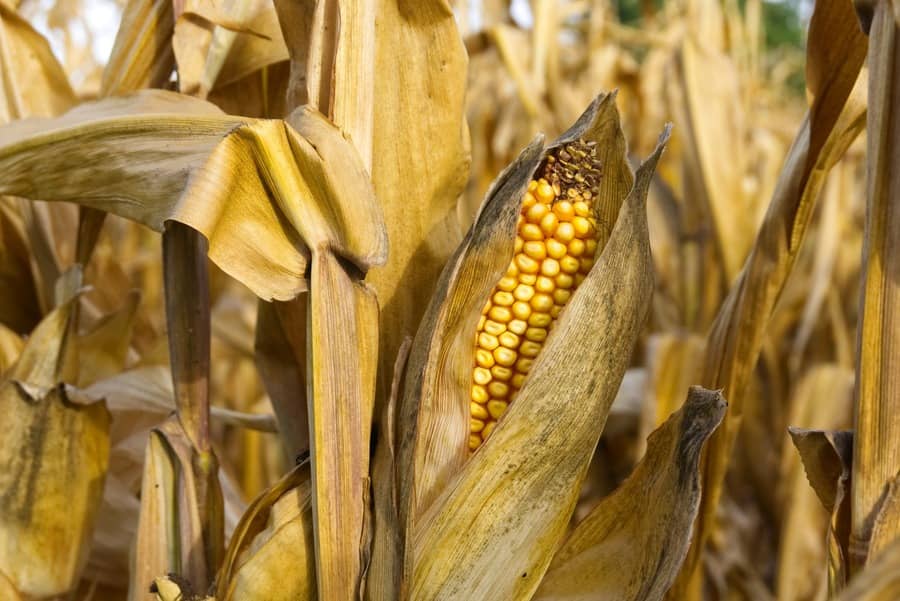Porto Alegre, January 17, 2022 – The climate in La Nina year does not offer respite to Brazilian growers. Some locations in the North cope with excessive rainfall, the South with another scenario of drought and production losses of corn and soybeans. This is a worse drought than that registered in 2021 when corn in Rio Grande suffered more in the summer, but the other states still had regular results with corn and soybeans. This year, both crops suffer from extreme weather, and now the rains need to return to ensure a good planting start of second-crop corn.
Rainfall in the last thirty days remained on or above average in the Center-North of the country and below average in most of the South region. Thus, in general, we can say that the summer crop is normal in Goiás, São Paulo, Minas Gerais, Bahia, and center-north of Mato Grosso do Sul, regions that plant summer corn. Productivity potentials are very good and may even set records.
Unfortunately, this good result in these locations, in any hypothesis, does not compensate for the losses registered in the South region. However, even in the South we need to segment the production framework. Corn losses in Rio Grande do Sul are irreversible. We are waiting for the harvest to unfold in the state, evaluating yield and determining whether production can still receive new cuts or some minimal improvement. Therefore, we kept the production cut in the states at 2.9 mln tons, practically 50% of the summer crop losses.
In Santa Catarina, as well as in Rio Grande do Sul, there are many crops reaped for silage and some cut to make room for soybean planting in the west. The productivity of the first crops is relatively good, near 100 bags/hectare, but from now on there must be losses. The center-east side has received rains of 90 to 120 mm in the last thirty days. We can say that the crops in the east and south of Santa Catarina are in good production conditions at the moment. Therefore, the losses in the Santa Catarina production are more discreet and suggest the production of 3.9 mln tons in this summer crop.
In Paraná, the situation is really problematic in the west to the northwest of the state, as well as in the south of Mato Grosso do Sul. However, these regions have very little summer corn and the effects on the state’s overall production are minor. The November and December drought also affected the southwest of the state. We are cutting the number for Paraná to 3.7 mln tons. The southwest and south of the state received rainfall between 90 and 120 mm in the last thirty days. We can say that crops in southern Paraná are normal. Therefore, we do not anticipate a cut greater than the current, unless the yield surprises negatively at harvest.
With this scenario, we are cutting the Center-South production to 21.6 mln tons and entering the environment of effective evaluation of the yield observed during the harvest. The harvest is advancing in the South region and must only enter a more acute phase at the end of March and April in the Southeast region and Goiás.
The second-crop planting, in turn, has just begun, with very small percentages for calibration so far. In Mato Grosso, the crops reaped so far are being replaced by cotton. As of this week, the harvest must advance and open the planting of the 2022 second crop. Goiás, Minas Gerais, and São Paulo must enter the second-crop planting at the end of January and in February. Basically, the second crop will be planted in a great window.
Paraná, southern Mato Grosso do Sul, and Paraguay will depend on the rains in the coming days. Many growers are harvesting soybeans, but are not planting second-crop corn due to very poor soil moisture conditions. Besides the historic losses of soybeans, the risk of planting under such climate and soil conditions could already lead to a drop in planting due to irregular germination. As soon as the rains improve, the planting will be fast and in a good window.
In general, the summer crop losses in the South, the beginning of a new high in domestic corn prices, and the good planting window are motivating some last-minute decisions on planting. Therefore, we have improved the area to be planted a little, now at 14.56 mln tons, with an increase to 82 mln tons in production. Undoubtedly, the year of La Nina brings us additional concerns with climate for the second crop as well. Weather projections are signaling the resumption of rains in Paraná, heading for the Midwest in February, with Mato Grosso having prolonged rains until March. The issue of the cold arriving earlier in La Nina years is an item to be observed in Paraná and region for the second crop. However, the premature arrival of cold does not mean there will be a catastrophic frost to the point of bringing losses to the 2022 second crop. Planting earlier helps to reduce these risks. However, the observation of the climate will continue as a central point.
All in all, the Brazilian crop has been revised to 115.6 mln tons and now awaits the profile of the 2022 second crop, since the summer tends to show small corrections only in the next reports.
Agência SAFRAS Latam
Copyright 2022 – Grupo CMA

